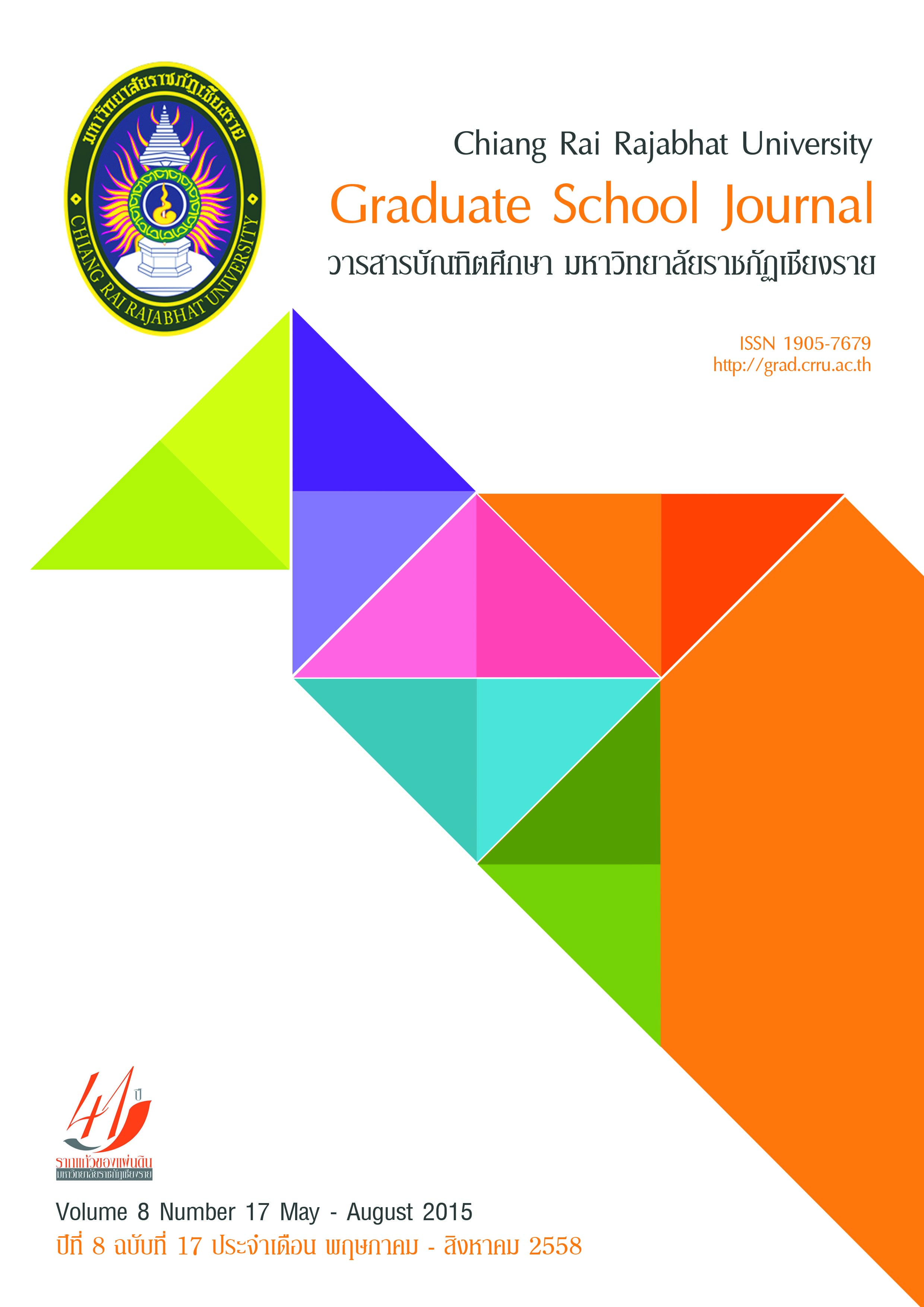An Analysis of Ordinary National Educational Test (O-NET) Used for Prathom 6 Students
Main Article Content
บทคัดย่อ
The results of this study could contribute to teachers and students in improving their knowledge and understanding of O-NET test. In addition, the findings could encourage their awareness the students to empower their testing abilities. It would contribute to the improvement of English skills for students in achieving higher levels of their study and thus the development of national education.
การวิเคราะห์ภาษาที่ใช้ในแบบทดสอบทางการศึกษาแห่งชาติขั้นพื้นฐาน (O-NET) ของนักเรียนชั้นประถมศึกษาปีที่ 6
การวิจัยในครั้งนี้มีวัตถุประสงค์เพื่อวิเคราะห์ภาษาที่ใช้ในแบบทดสอบทางการศึกษาระดับชาติขั้นพื้นฐาน (O-NET) สำหรับ นักเรียนชั้นประถมศึกษาปีที่ 6 ขอบเขตการศึกษาในแบบทดสอบประกอบด้วย 3 ส่วน คือ การพูด (Speaking) การอ่าน (Reading) การเขียน (Writing) คำศัพท์ (Vocabulary) และ ทักษะพุทธิพิสัยตามทฤษฎีการเรียนรู้ของ Bloom (Bloom’s Taxonomy) แหล่งข้อมูลในการวิจัยครั้งนี้ ได้แก่ แบบทดสอบทางการศึกษาระดับชาติขั้นพื้นฐาน O-NET ปีการศึกษา 2554-2556 การ วิเคราะห์ข้อมูลภาษาใช้กรอบแนวคิดการวิเคราะห์เนื้อหา (Content Analysis)
ผลการวิจัยพบว่า ส่วนที่ 1 การพูด (Speaking) พบการใช้ Illocutionary Act มากที่สุด และพบองค์ประกอบที่เรียงจาก มากไปน้อย ได้แก่ Directives, Assertives รองลงมาคือ Expressives และ Commissives แต่ Declarative ไม่พบในการวิจัย ครั้งนี้ ส่วนที่ 2 การอ่าน (Reading) มีการใช้ประเภทของคำถามที่ใช้ในแบบทดสอบการอ่าน 2 ประเภท คือ Inference และ Vocabulary in Context ส่วนที่ 3 การเขียน จากการวิเคราะห์การเชื่อมคำในประโยค พบ ลักษณะการเชื่อมประโยคที่ปรากฏใน แบบทดสอบ 2 ประเภท คือ Subject - Verb Agreement และ Conjunction ส่วนที่ 4 คำศัพท์ (Vocabulary) พบลักษณะการ ใช้คำศัพท์ 3 ประเภท คือ Word Formations, Word Relations และ Multi-word Verbs ในส่วนของ Word Formations พบ ว่ามีการใช้ Suffix มากที่สุดในประเภท ในส่วนของ Word Relations พบการใช้ Synonym มากที่สุดใน และในส่วนของ Multiword Verbs พบการใช้ Phrasal Verbs มากที่สุดใน ในภาพรวมของการใช้คำศัพท์ Word Formations พบมากที่สุด และผลการ วิเคราะห์ทักษะพุทธิพิสัยตามทฤษฎีการเรียนรู้ของ Bloom ในแบบทดสอบ ผลการวิเคราะห์พบว่าข้อสอบส่วนใหญ่ อยู่ในระดับ ความรู้ ความจำ (Knowledge) และพบมากที่สุดในส่วนของการพูด (Speaking)
ผลการวิจัยสามารถสะท้อนถึงครูผู้สอน และนักเรียนว่าควรมีการพัฒนาความรู้ และความเข้าใจเกี่ยวกับภาษาที่ใช้ใน แบบทดสอบ ในการช่วยกระตุ้น และสร้างความตระหนักให้ผู้เรียนเกิดการเรียนรู้ เพื่อพัฒนาความสามารถด้านทักษะการทำแบบ ทดสอบการศึกษาระดับชาติ เพื่อนำไปสู่การพัฒนาทักษะทางภาษา และผลสัมฤทธิ์ทางการเรียนในระดับสูงต่อไป
Article Details
บทความที่ได้รับการตีพิมพ์เป็นลิขสิทธิ์ของวารสารมหาวิทยาลัยราชภัฎเชียงราย
ข้อความที่ปรากฏในบทความแต่ละเรื่องในวารสารวิชาการเล่มนี้เป็นความคิดเห็นส่วนตัวของผู้เขียนแต่ละท่านไม่เกี่ยวข้องกับมหาวิทยาลัยราชภัฎเชียงราย และคณาจารย์ท่านอื่นๆในมหาวิทยาลัยฯ แต่อย่างใด ความรับผิดชอบองค์ประกอบทั้งหมดของบทความแต่ละเรื่องเป็นของผู้เขียนแต่ละท่าน หากมีความผิดพลาดใดๆ ผู้เขียนแต่ละท่านจะรับผิดชอบบทความของตนเองแต่ผู้เดียว


